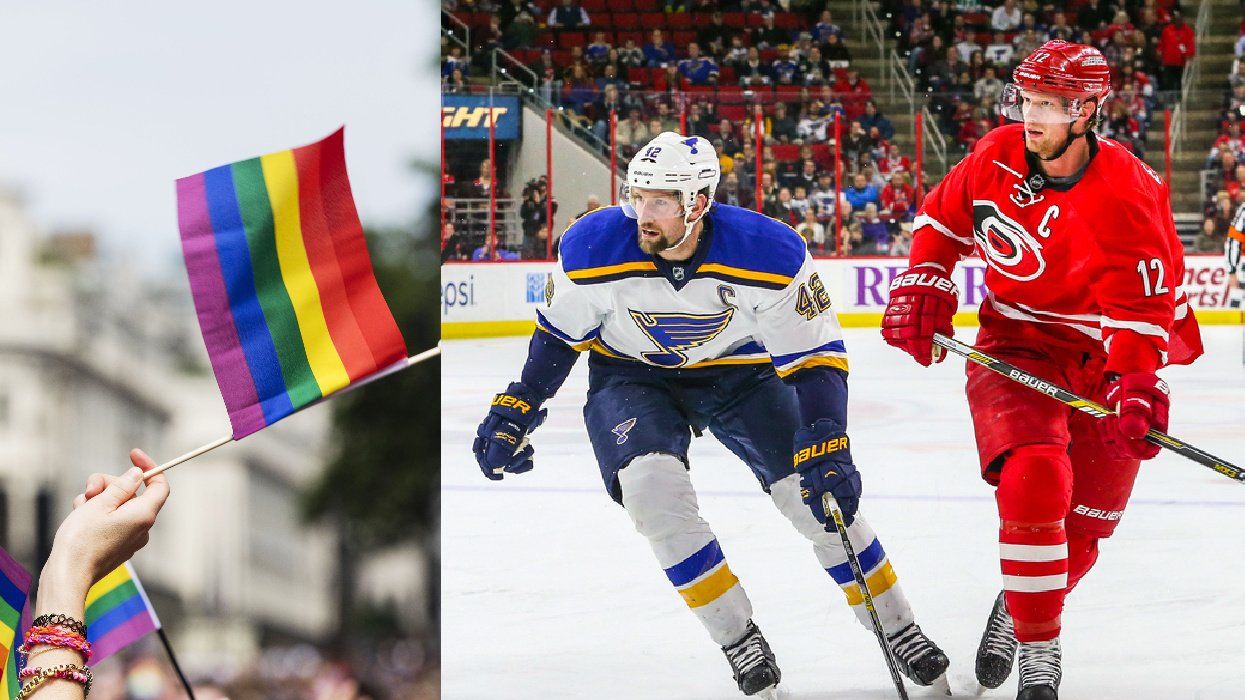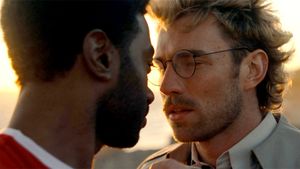Editor's note: Frankie de la Cretaz is an independent journalist whose writing sits at the intersection of sports and gender. They are the co-author of “Hail Mary: The Rise and Fall of the National Women’s Football League,” and their work has been featured in The New York Times, The Atlantic, Sports Illustrated and other publications. The opinions expressed in this article are their own. Read more opinion at CNN.
(CNN) — Tuesday marked the beginning for the National Hockey League’s 2023-2024 season, just one day before National Coming Out Day. In a telling bit of insensitive timing, the league chose that day to affirm a new ban on Pride Tape — rainbow tape that goes around players’ hockey sticks that many players chose to use during warmups on Pride Night.
This new policy comes on the heels of both the NHL and Major League Baseball advising teams to halt the wearing of Pride-themed jerseys for team Pride Nights last season after some players expressed discomfort, saying the jerseys were against their religious beliefs. Some players refused to take part in warmups when their teams wore Pride Night jerseys; some Russian players or their teams have expressed concerns about those players running afoul of Russian anti-LGBTQ laws. The NHL called the jerseys “a distraction.”
The makers of Pride Tape said they are “extremely disappointed”; an NHL spokesperson told ESPN that the tape had been permitted in years past as an exception to stick tape restrictions (which allow players to use only black and white tape). The league said this new ban was to stop teams and players from using the tape as an “end around” the new uniform policy that doesn’t allow uniforms or warmups to be altered for “specialty” theme nights. A spokesperson for Pride Tape has told media that since Tuesday’s announcement, NHL players have contacted them about getting the tape. On X, a Philadelphia hockey writer posted a quote Wednesday from Flyers player Scott Laughton: “you’ll probably see me with the pride tape on that night anyway.” “If they want to say something, they can.”
The league clarified that the new restrictions “don’t interfere with players’ ability to support in other settings,” but the damage done by this new policy will be great. The NHL has sent a loud and clear message to LGBTQ+ fans that they don’t care to support them and that the sport is not safe for them. But there is another group of LGBTQ+ people that will feel the chilling effect of this ban, too: those in the locker room.
When Luke Prokop came out in 2021, he became the NHL’s first openly queer prospect player. Two years later, it’s still just him and he has had to watch while the league that he one day hopes to play in becomes increasingly hostile towards people like him. Last year, when teams stopped requiring players to wear Pride Night jerseys, Prokop said that it felt “like a step back for inclusion in the NHL.”
There still aren’t really any out gay athletes in the major American men’s sports leagues, aside from American soccer player Collin Martin of the USL Championship League, who came out in 2018 while playing for Major League Soccer’s Minnesota United. NFL player Carl Nassib came out as gay in 2021 but retired before this season. Prokop has said Nassib’s coming out inspired him and many speculated that perhaps Nassib’s bravery would have a ripple effect in the world of men’s sports. That has not been the case.
Much has been written about the disparity between out athletes in men’s sports versus in women’s sports. A 2018 study from the Human Rights Campaign found that a majority of Americans had witnessed anti-LGBTQ+ attitudes in sports, and the US ranks poorly among peer countries when it comes to homophobia in athletics. The unsafe culture created by the men’s leagues themselves is largely to blame. How can we ever expect men to feel safe coming out when even using rainbow-colored stick tape during game warmup is considered controversial?
Some are calling the NHL’s ban equivalent of a “don’t say gay” policy, an indication that the current political and legislative climate is having ripple effects on larger culture. The American Civil Liberties Union is currently tracking 501 anti-LGBTQ+ bills in the United States and a record number of bills targeting the LGBTQ+ community were introduced this year—double the number that were introduced last year.
These bills range from bans on gender-affirming healthcare to restrictions on the ability to teach queer history in schools to bans on transgender youth’s ability to play sports. Some states are attempting to make it a felony to expose children to drag queens. At least 19 transgender and gender non-confirming people have been murdered in the US this year, with the violence disproportionately impacting trans women of color. Violence against trans women has been deemed “a crisis” by advocates in the community. LGBTQ+ people are suffering and in too many cases dying as a result of discriminatory attitudes, policies and legislation.
This is the context in which the NHL has decided that allowing players to wear rainbows on their sticks and sleeves is a problem. That reality is chilling. Perhaps, though, it should not be a surprise, as workplaces across the country are cutting the Diversity and Inclusion Initiatives that many of them rushed to put in place following the death of George Floyd and country-wide uprising in 2020. This makes the NHL no different. And it has ripple effects into the locker rooms but also into the front offices. Many teams have queer and trans people employed at some level. The organist for the Anaheim Ducks is a transgender woman who wondered on X whether or not she had just been banned from the league.
“We are now at a point where all the progress made, and relationships established with our community, is in jeopardy,” the You Can Play Project, a long-time partner of the NHL that advocates for inclusive sporting culture, said in a statement. “Making decisions to eradicate our visibility in hockey — by eliminating symbols like jerseys and now Pride Tape — immediately stunts the impact of bringing in more diverse fans and players into the sport.”
And it’s not like the NHL can really afford to shut out fans. In recent years, soccer has overtaken hockey as the fourth most popular sport in the US — behind baseball, basketball, and football. Viewership numbers of the NHL have been steadily declining.
Sports leagues can offer as much lip service as they want about being welcoming and wanting to support inclusive environments for LGBTQ+ players. But the reality is that as long as locker room and league culture remains homophobic, athletes will remain in the closet.
When the league itself won’t even allow the bare minimum support for the LGBTQ+ community, how can individual teams and players do anything to counteract that? They really can’t. Individual players speaking out against these kinds of bans are important, but they can only do so much. Culture needs to change at the top and the NHL has shown it’s not willing to do that.
The-CNN-Wire
™ & © 2023 Cable News Network, Inc., a Warner Bros. Discovery Company. All rights reserved.
Breaking down the NHL pride ban

Video Source: Advocate Channel
- New Women's Professional Hockey League, PWHL, to Launch in January ›
- Chicago Blackhawks Will Not Wear Pride Jerseys, Citing Safety of Russian Players ›
- Does The NHL Support Transgender Athletes? Team Trans Weighs In ›
- NHL Bans Pride Tape, Stops Players From Showing LGBTQ+ Support At Games ›
- NHL Pride Jerseys Abandoned by Teams After Conservative Pushback ›
- NHL Reverses Pride Tape Ban After Fans & Players Speak Out ›
- NHL Suspends Ottawa Senators' Shane Pinto For 41 Games For Violating Gambling Rules ›
- NHL Grapples With Neck Guard Rule After Adam Johnson's Death ›


















































